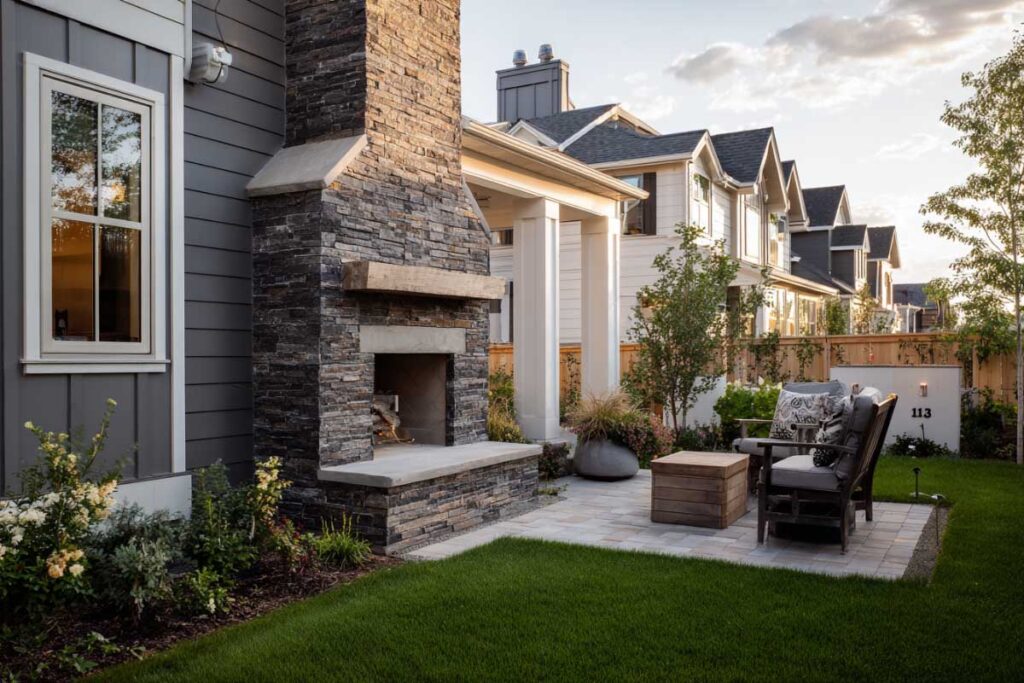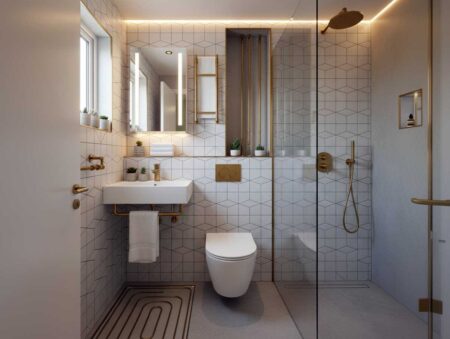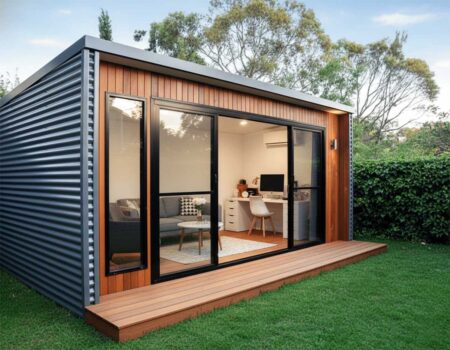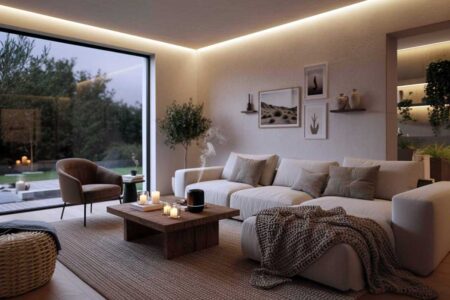I learned the hard way that pulling a tape measure after the mason arrives is a recipe for costly rework. When we added a stacked-stone fireplace off our deck last spring, the inspector flagged it for sitting only eight feet from the siding. Two weeks, one concrete pad, and a lot of grumbling later, the structure finally met code. Here is the cheat-sheet I wish I’d had before I broke ground.
Why the Setback Matters
- Life safety: Radiant heat can ignite wood trim in minutes, especially if embers ride the wind toward soffits.
- Insurance compliance: Carriers increasingly deny fire claims if distances fall short of local codes.
- Draft performance: More breathing room around the chimney improves airflow and keeps smoke out of the patio seating zone.
- Resale value: Appraisers look for permitted installations; a red-tagged fireplace can shave thousands off closing prices.
Quick-Reference Table: Minimum Clearances in Major US Cities (2025)
| City / Authority | Wood-Burning Outdoor Fireplace | Portable Gas / Enclosed Unit | Notes |
|---|---|---|---|
| New York City, NY | Prohibited: Solid-fuel fire pits and chimineas are illegal on all residential lots. | Check with FDNY: gas fire features allowed if tank <20 lb and 10 ft from combustibles (common rule of thumb) | Always file a DOB work permit for any fixed gas line. |
| Los Angeles, CA | 25 ft from any structure or combustible material for recreational fires. ICC Digital Codes | 15 ft for portable outdoor fireplaces used at one- and two-family dwellings. | City adopts CA Fire Code 2022 with local amendments. |
| Chicago, IL | 15 ft from buildings, fences, decks, or trees; fire must be in a metal bowl with spark screen. halespropertymanagement.com | Same 15 ft rule applies | Charcoal and gas grills share the same setback. |
| Houston, TX | 10 ft from combustible construction for any open-flame cooking or fire feature. houstontx.gov | 10 ft | Multi-family balconies need sprinklers or greater distance. |
| Phoenix, AZ | 25 ft from structures for any recreational fire. Phoenix | 15 ft typical (IFC default) | City follows 2018 IFC with amendments. |
| International Fire Code (IFC 2024) | 25 ft for burn piles ≤3 ft wide x2 ft high (recreational fires) ICC Digital Codes | 15 ft for portable outdoor fireplaces (exception for one and two-family homes) | Many municipalities import these numbers directly. |
Los Angeles mirrors the California Fire Code, which repeats the IFC language on portable units. Confirm with the LAFD plan checker before you pour a footing.
How to Use This Table
- Start with your zip code: Look up your municipal or county fire department website, then cross-check the table for a ballpark figure.
- Measure twice, site once: Measure from the farthest protrusion of the fireplace (usually the chimney cap) to the nearest part of the house, deck, or pergola.
- Check manufacturer specs: Pre-fab gas inserts often demand even wider clearances than local code; follow the stricter number.
- Mind the overhangs: Eaves, gutters, and branches count as combustible materials; measure to the point closest to the firebox opening.
- Pull permits early: In most jurisdictions a fixed masonry or gas-line fireplace triggers both building and fire permits. Submit drawings that label the distance clearly to avoid plan-review delays.
Other Distance-Related Best Practices
- Height clearance: Keep chimney tops at least two feet above anything within ten feet horizontally to promote draft and keep sparks away from the roofline.
- Wind buffers: Plant non-combustible hardscape, like a low stone wall on the prevailing wind side to block embers.
- Zone-zero landscaping: In wildfire-prone areas, maintain a five-foot non-combustible perimeter of gravel or pavers around the unit. California’s new “zone zero” law follows this principle. AP News
FAQ
How far should an outdoor fireplace be from the house?
Most US codes require 15 to 25 ft. Always verify with your local fire marshal because some cities (like NYC) ban wood-burning units altogether.
Does the distance change for gas vs. wood fireplaces?
Yes. Gas and other fully enclosed units often qualify for the shorter 15 ft clearance, while open wood fires need 25 ft or more.
What about portable fire pits on a wooden deck?
Use a deck-safe barrier pad, maintain the same 15 ft clearance, and keep a 4-A rated extinguisher or charged garden hose within reach.
Do I need a chimney spark arrestor?
If you burn wood, definitely. Many city codes-including LA and Phoenix, require a ⅜-inch mesh screen to stop embers.
Final Checklist Before Lighting the First Log
- ✅ Confirm setback with local code official
- ✅ Obtain any required building and fire permits
- ✅ Install a non-combustible base and hearth extension
- ✅ Add a spark arrestor and screen
- ✅ Keep a Class A extinguisher nearby
- ✅ Store firewood at least 30 ft from the structure
More on Blufashion
- How to Invest in Real Estate During a Recession
- Average Property Prices in Downtown Dubai
- Designing A Functional Kitchen Layout: Maximize Space And Efficiency In Your Cooking Haven






